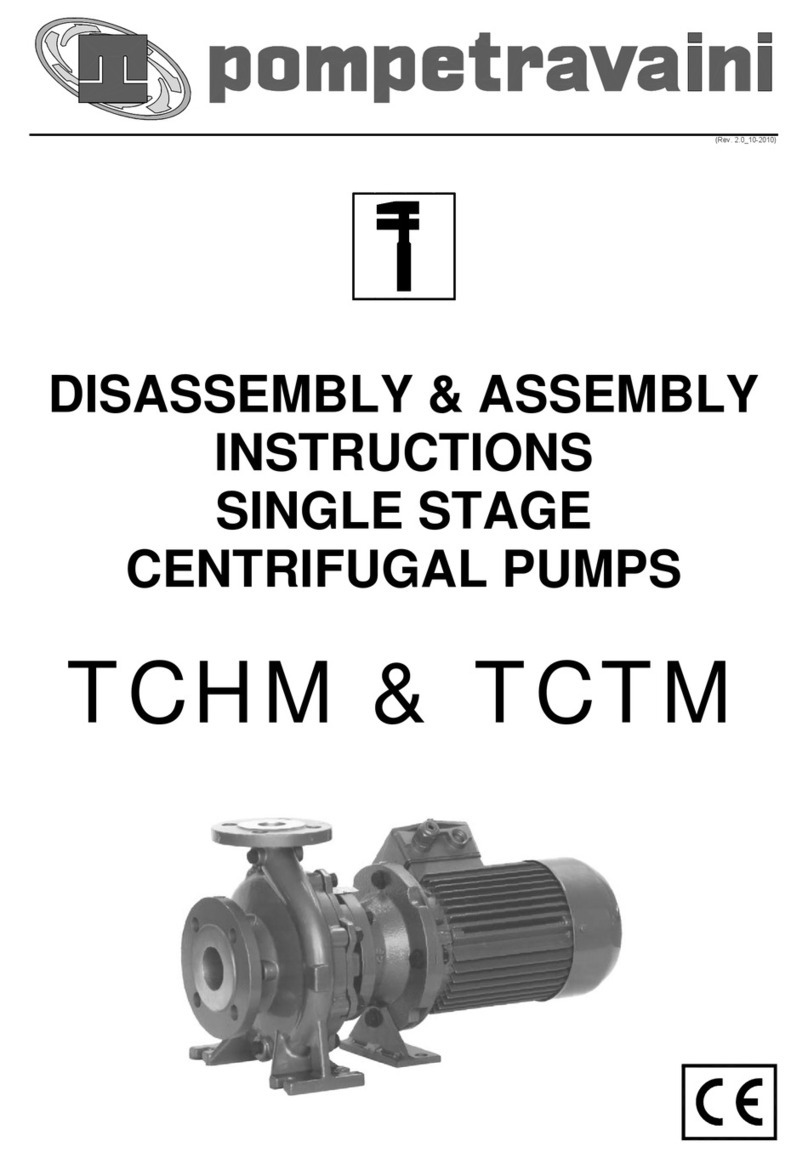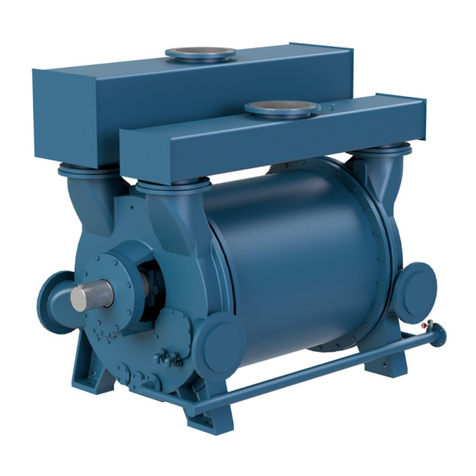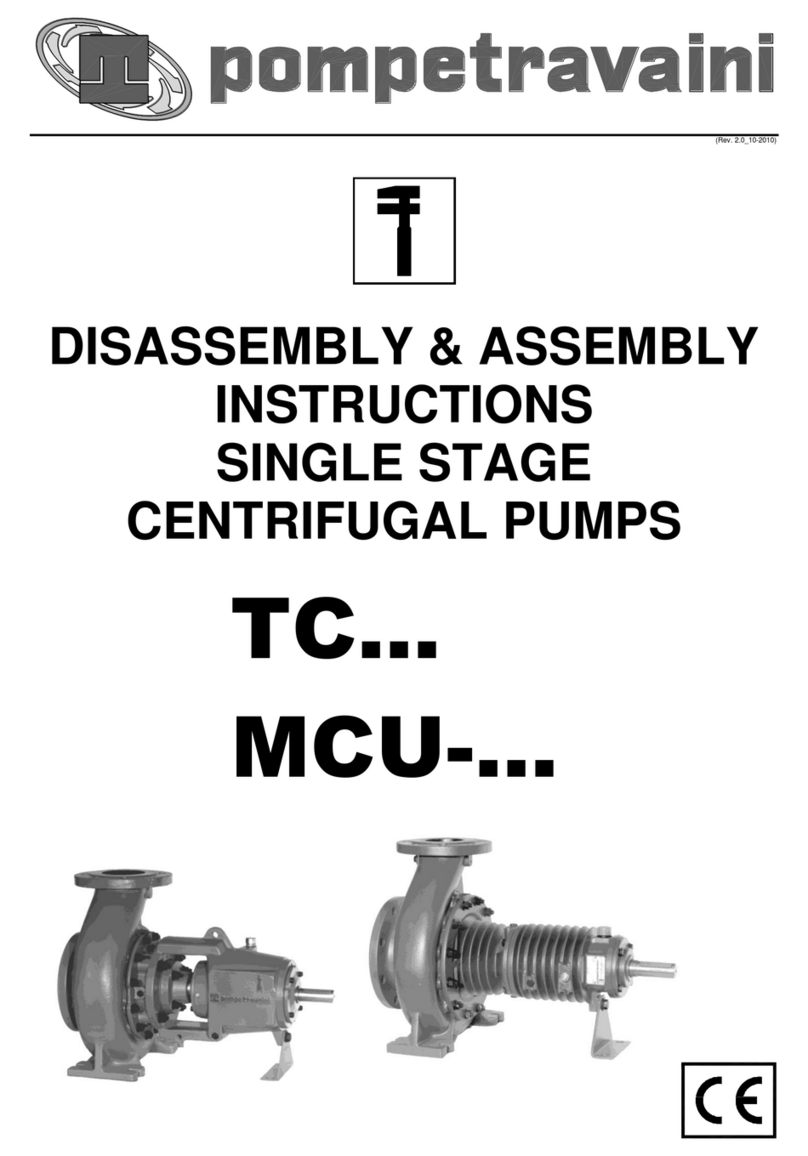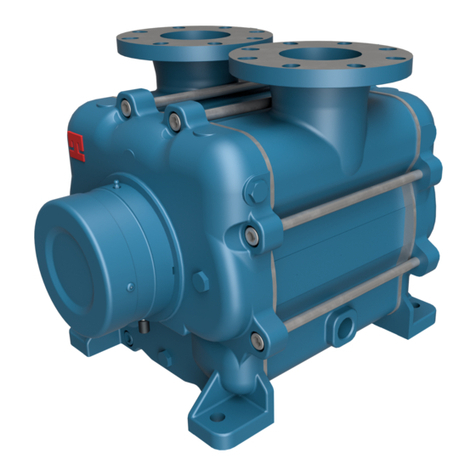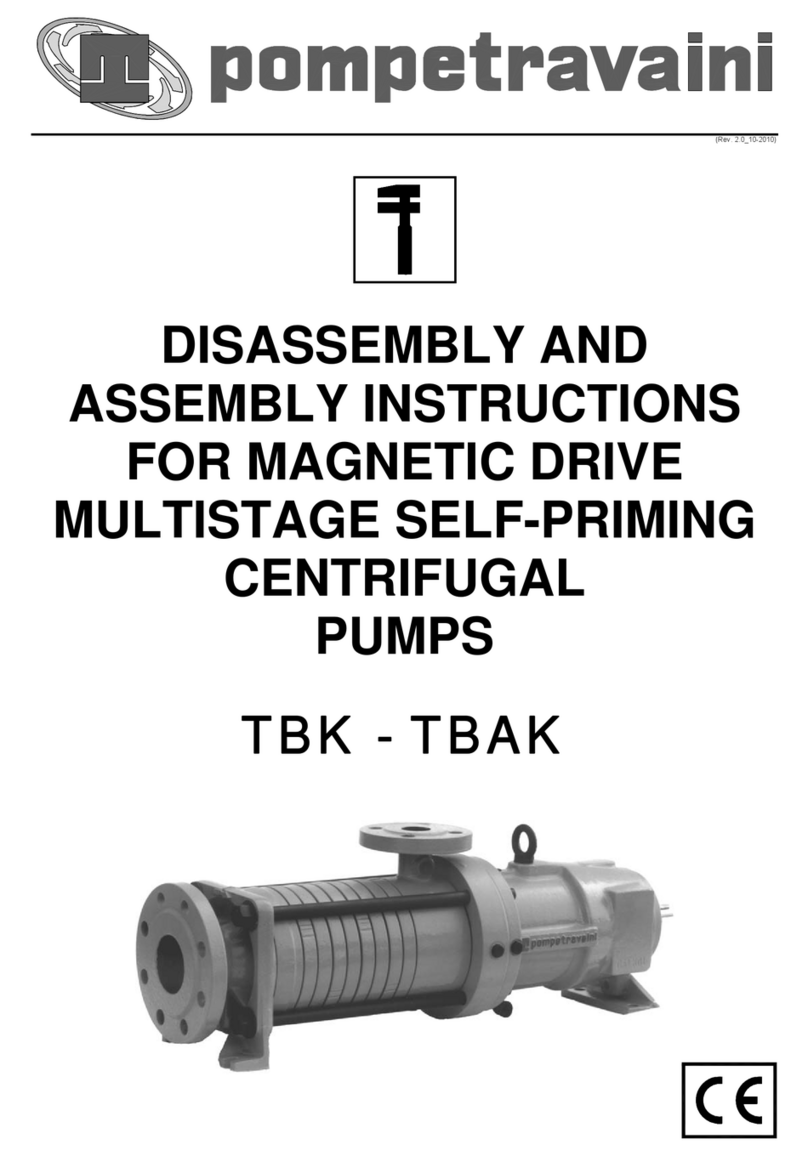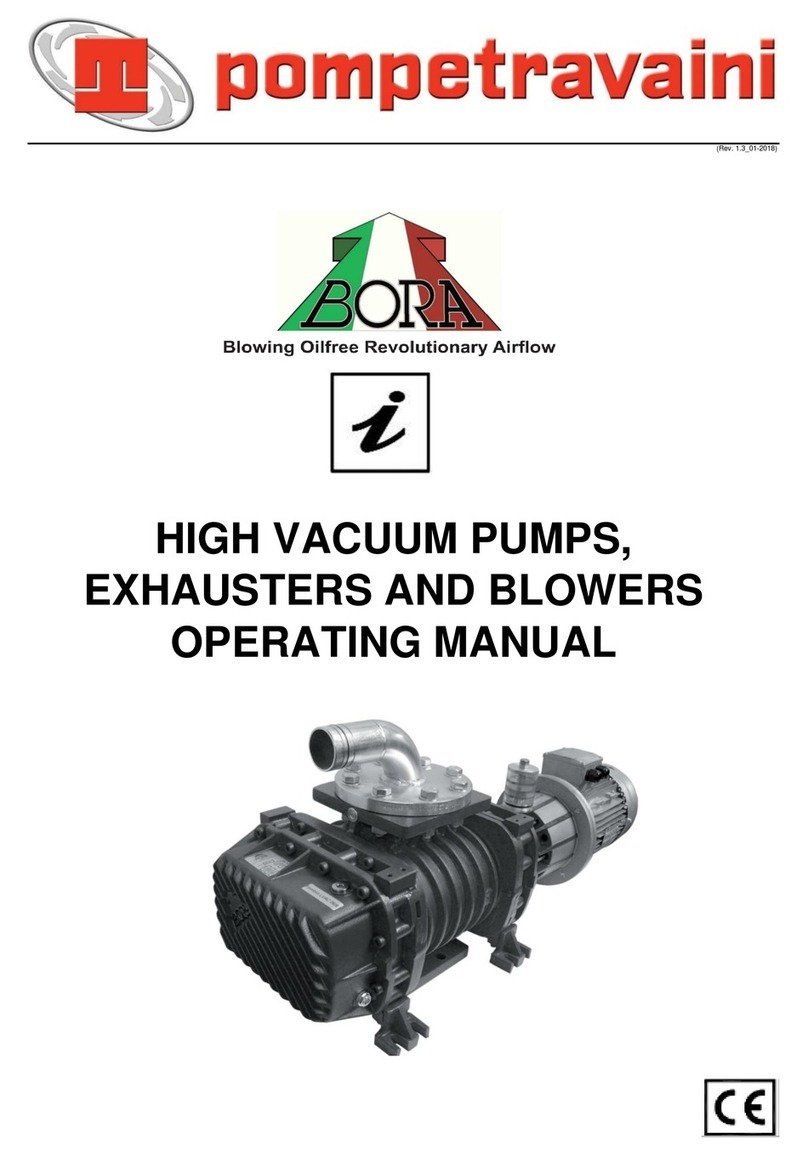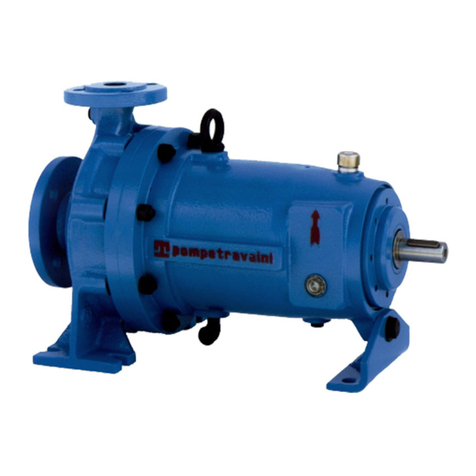
Operating manual for centrifugal pumps AT - TB… - MC… - TC… - TMA
8
DANGER!
Danger due to cut, prick or abrasion Take immediate actions to dispose of possible packaging parts that may
generate injuries or risks (for example edges, nails, splinters, etc.)
We remind that the single stage centrifugal pumps supports contain lubricating oil.
Organize the right management of materials subjected to controlled and differentiate disposal (for example
plastic, cartoon, polystyrene materials, etc.) according to the laws into force and to a safe local environment
management. according to the laws into force and to a safe local environment management.
If the pump will be stored, as foreseen in our Operating Manuals, we recommend a proper care to avoid oil
dropping on the ground.
The pump must ALWAYS be moved and transported in the horizontal position.
Before transportation check on the nameplate, in the transportation and technical documents for:
- total weight
- centre of gravity
- maximum outside dimensions
- lifting points location.
DANGER!
Danger due to overturning or crushing For a safe lifting it is recommended to use ropes, or belts properly
positioned on the pump and/or lifting eyebolts with correct movements, to prevent material damages and/o
personal injuries.
The fig. 1 shows several additional examples of lifting.
Avoid lifts whereby the ropes or straps, form a triangle with the top angle over 90° (see fig. 2).
Lifting eyebolts fitted on single components of the assembly (pump or motor) should not be used to lift the total assembly.
Prior to moving the unit from an installation, always drain any pumped fluid from the pump, piping and accessories, rinse
and plug all openings to prevent spillage.
The fig. 3 shows several additional examples of lifting to be avoided.
CAUTION!
Possible contact with fluids or harmful substances. Before removal after a period of operation, the pump,
together with auxiliary piping and jacketing, must be drained and decontaminated from the handled media.
Every hole and opening communicating with the inside of the pump must be properly plugged.
For removing the pump from the installation see chapter 17. Operate provided with apposite protective devices.
6 - STORAGE INSTRUCTIONS
After receipt and inspection the unit, if not immediately installed, the unit must be repackaged and stored in the best way.
For a proper storage proceed as follows:
- store the pump in a location which is closed, clean, dry and free of vibrations
- do not store in areas with less than 5°C temperature (for lower temperature it is necessary to completely drain the
pump of any liquids which are subject to freezing)
POSSIBILITY OF FREEZING!
Where the ambient temperature is less than 5°C it is recommended to drain the pump, piping, separator, heat
exchanger, etc. or add an anti-freeze solution to prevent damage to the equipment.
It is possible to use as antifreeze a mixture of surface-active glycol or other suitable products making sure they
are compatible with both pump gaskets and elastomer.
- fill the pump with a rust-preventative liquid that is compatible with the pump gaskets and elastomer. Rotate the shaft
by hand to impregnate all internal surfaces. Drain the excessive liquid from the pump and associated piping (see
chapter 11).
Please note that the pumps with cast iron internal parts have been treated at the factory, prior to shipment, with a rust-
preventative liquid: this liquid is capable of protecting the pump against rust for a period of 3 to 6 months.
A further solution, for long term storage, is to fill the pump with the rust inhibitor, rotate the pump shaft by hand to
eliminate any air pockets (the liquid must be suitable with gasket, elastomer and pump materials).
- plug all openings that connect the pump internals to the atmosphere
- protect all machined external surfaces with an anti-rust material (grease, oils, etc.)
- cover the unit with plastic sheet or similar protective material
- rotate pump shaft at least every three months to avoid possible rust build-up or seizing
- keep the pump in a dry and clean place not subjected to vibrations caused by other sources
- any pump accessories should be subjected to similar procedure.
LONG TERM STORAGE INSPECTION
i
i
